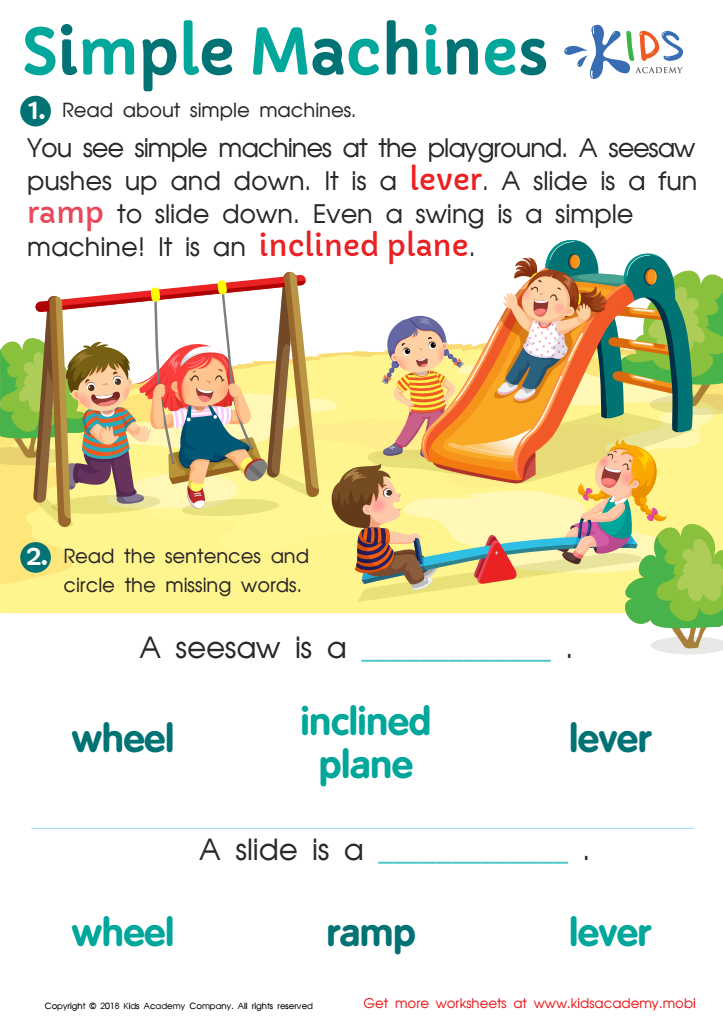Understanding Simple Machines Worksheets for Ages 4-8
4 filtered results
-
From - To
Unlock the wonders of physics with our “Understanding Simple Machines Worksheets” designed specifically for children ages 4-8! These engaging worksheets introduce young learners to the fundamental concepts of simple machines, including levers, pulleys, and inclined planes, in a fun and interactive way. Each activity is crafted to enhance critical thinking and problem-solving skills while making learning enjoyable. Perfect for both classroom and home use, our worksheets include colorful illustrations, hands-on exercises, and easy-to-follow instructions that keep kids captivated. Foster curiosity and a love for science with these educational resources that help kids comprehend how simple machines work in their everyday lives.


Simple Machines Worksheet




Simple Machines Worksheet


Simple Machines: Screw Worksheet
Understanding simple machines is crucial for children aged 4-8 as it lays the foundation for critical thinking, problem-solving, and an appreciation of science in everyday life. At this age, children are naturally curious, eager to explore how things work. Introducing simple machines—like levers, pulleys, inclined planes, wheel and axle, screws, and wedges—helps them make sense of the world around them. Through hands-on experiences, such as building structures or moving objects, they develop fine motor skills and spatial reasoning.
Moreover, engaging with simple machines fosters creativity and innovation. When children learn the principles of mechanical advantage, they begin to experiment and invent. For parents and teachers, integrating simple machines into lessons encourages cooperative learning through activities and projects that can involve collaboration and communication, enhancing social skills.
Additionally, understanding these concepts supports STEM (Science, Technology, Engineering, Mathematics) learning early in life. This vibrant introduction sparks lifelong interests and cognitive development, preparing children for more complex scientific understandings down the line. By nurturing a knowledge of simple machines, parents and teachers empower children to construct their understanding of the physical world, cultivating a sense of achievement and curiosity critical for future learning.
 Assign to My Students
Assign to My Students





















